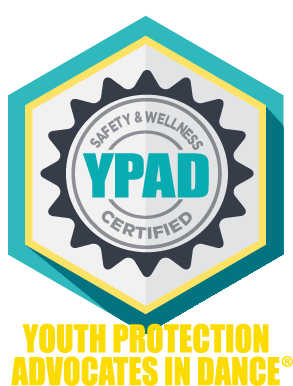
2022-2023
Our competition is intended to provide a supportive and comfortable environment where dancers can showcase their talents and receive constructive critiques to enhance their skills. All dancers must be registered under an account created by a Studio or Dance Program Owner/Director, however, the Owner/Director does not need to be present at the event.
On a first-come, first-serve basis, studios with 5 or more registered dancers are allowed a maximum of 75 routines (solos, duo/trios, and groups – limit one solo per registered dancer). For registrations with more than 75 routines, please contact the office to submit a request. Space is limited.
All event pricing is available in the Studio Owner/Director registration portal. Please login to your account to view the competition fees per routine size.
AGE DIVISIONS
Sparks Division Average age: 5-7
Mini Division Average age: 8-10
Junior Division Average age: 11-12
Teen Division Average age: 13-15
Senior Division Average age: 16-19
If a routine has a dancer who is 20+ as of January 1st, 2023, the routine will be placed in the Adult Division and will be judged for adjudicated awards only.
All Ages are as of January 1, 2023. Dancers must be prepared to present proof of age if requested.
To determine the average age of an entry, add all the ages together and divide by the total number of dancers in the routine. All averages are to be rounded down to the nearest whole number. For example, if a routine average age is 15.6, you would drop the decimal and the routine would compete in the Teen (13-15) age category.
The average age of each entry may not drop more than one age division below the age of the oldest dancer in the entry, regardless of the actual average age. For example, if an entry contains dancers ranging in age from 7-18, the entry may not compete in a division younger than the Teen (13-15) age category (one division younger than the oldest dancer, 18 years old).
Routines must compete in the average age group based on the outline listed above and are not eligible to bump up in age groups. If a routine is placed in the incorrect category (age division, style, etc.), our staff reserves the right to adjust it at any time.
TIME LIMITS
Solo (1) 3:00min
Duo/Trio (2-3) 3:00min
Small Group (4-9) 3:00min
Large Group (10-16) 4:00min
Line (17-24) 5:00min
Production (25+) 6:00min
*All performances over the time limits will be deducted 1 point per judge
MUSIC REQUIREMENTS
Music Upload: Music must be submitted on your online registration from the start of registration until two weeks before the event. You may bring a USB/flash drive for backup use only.
PERFORMANCE GENRES
Entries will be categorized by the genre that most closely represents the movement.
TAP dance is a uniquely audio-visual form that is characterized by the percussive sounds generated by either the metal taps or hard-soled shoes worn by the dancer(s). Specific rhythms are outlined in the choreography and then generated by the performers; these rhythms hold equal importance to the physical movements of the body which support the sound. The rhythms and movement work in tandem with music, but the rhythms can also serve solely as music, therefore technique applies greatly to both facets.
JAZZ dance is a dynamic and technical form that includes several styles, such as Classical Jazz, Latin Jazz, Afro Jazz, Contemporary Jazz, Commercial Jazz, Street Jazz, and Broadway Jazz. Jazz technique primarily involves clean (or clear) body lines as well as parallel positions and shapes; movements tend to be bold, stylish, and isolated. While not mandatory, uptempo music is often used and dancers reflect the mood and point of view of the music.
CONTEMPORARY dance is a broad and widely inclusive form that draws from and typically combines several other genres including, but not limited to, ballet, modern, and jazz dance. Contemporary choreography is distinguished by its abstract and innovative movement as well as its challenging and dense concepts. The music involved in contemporary routines is usually varied, from traditional to experimental, but often employed as a backdrop to the piece and a foundation for the intention of the dancer(s).
LYRICAL dance is an expressive and emotional form that draws primarily from ballet, jazz, and modern dance techniques. Lyrical dance focuses on strength, control, and clarity of movement and can be distinguished either by deeply expressive or narrative intentions. The movement is usually in direct response to the lyrics, mood, or content of the music chosen and it is the goal of the dancer(s) to embody that through performance.
BALLET dance is a foundational form that is based on a specific kind of technicality and employs a classic vocabulary of movement. Classical ballet movement is designed to showcase stability and grace, as well as the understanding of turnout; thus technique is absolutely critical. Routines demonstrate melody and harmony of movement as it relates to music.
HIP-HOP is an ever-evolving form that involves movement deriving from hip hop foundations such as Breaking, Popping, Locking, Waving, etc. as well as the commercial dance industry and current social dances. The form tends to focus on individuality within collective movement, striving for entertainment and cleanliness simultaneously, and recognition of the form's roots. Choreography tends to directly reference the music through musicality, lyricism, tonality, and overall structure.
MUSICAL THEATRE is a highly theatrical dance form that derives from stage-bound origins, such as Broadway or the West End, and is often choreographed to a recognizable track from a stage or movie musical. Musical Theatre routines are distinguished by their heightened performance tendencies, such as lip-syncing, and an established storyline, employing dancers as specific characters. Musical Theatre routines often showcase jazz choreography, but they can include a wide range of movement types, including tap, as long as the musical narrative continues to be apparent.
BALLROOM is a global dance form that includes numerous variations such as the Cha-cha, Samba, Rumba, Jive, and Paso Doble. Ballroom is distinguished by certain disciplines in the lower body including the hips, legs, and feet that correspond with a specific poise approach and control in the upper body. There is often a character or historical approach to ballroom choreography, which is discernible by music choice and an interpretive performance quality.
OPEN routines and choreography tend to draw upon or combine numerous sub-genres of dance including, but not limited to, Clogging, Afro, Character, World Dance, Acrobatics, Jazz Funk, etc. Given the wide possibilities of sub-genres involved, dancers must strive to be proficient in all variations that the piece itself calls for. The choreography or the concept in which it is serving must be clearly understood and executed by all performers.
SCORING AND ADJUDICATION
Scoring is done on an adjudicated point scale by 3 judges, each scoring a total of 100 points. Ties will be awarded during Overalls for all age groups and routine sizes. In the instance a tie needs to be broken it will be broken by first, Technique score; second, Execution score; if the score can’t be broken by these factors there will be a tie. Any choreography that is not considered age-appropriate by the panel of judges will have 1 point deducted by each judge and possible disqualification. ALL JUDGES’ DECISIONS ARE FINAL.
Scoring percentages are as follows:
- Technical Execution - 30%
- Choreographic Execution - 30%
- Performance Quality - 20%
- Overall Impression - 20%
Adjudication is as follows:
- Ultimate Platinum: 289-300
- Platinum: 277-288
- High Gold: 265-276
- Gold: 253-264
AWARDS & WINNINGS
Adjudicated Awards: All registered routines will receive an adjudication placement based on the criteria breakdown above.
Overall Awards: In addition to the adjudicated awards, the overall high score winners will be awarded in each age division (Sparks, Mini, Junior, Teen, and Senior) in the following competition categories: Solo, Duo/Trio, Small Group, Large Group, Line, and Production. Any Group routine winning 1st Overall in their category during the 2023-2024 regional season at Adrenaline/Revive will earn FREE competition entry for that routine to NDH 2022.
Genre Awards: Highest scoring group routine per genre will be awarded.
All Heart Awards: Presented to the highest scoring group routine for each age group (Sparks, Mini, Junior, Teen, Senior) at each regional competition. Each All Heart recipient will receive a $150 credit towards the 2023-2024 regional season.
Heartstopper: Awarded to the overall highest scoring group routine out of the entire competition(from one of the All Heart recipients). Recipient of the Heartstopper will double their prize and receive $300 toward the 2023-2024 regional season.
Judge’s Pick: Our Judges will pick routines of their choice for special recognition in the 12&Under and 13&Over age divisions.
Versatility Award: Chosen by the Faculty, this award is for the most versatile studio of the weekend in all styles of dance.
Sportsmanship Award: The studio with the best overall sportsmanship during classes and competition chosen by Staff members.
WILDCARD SHOWCASE
Studios competing with 5 or more group routines will be eligible to submit any one (1) routine into our Wildcard Showcase, which takes place in our closing show. Each performance will receive a credit toward the 2023-2024 regional season in the amount of the routine’s entry fee.
PROPS
General props are permitted but must be taken on and off the stage within two minutes.
Each studio is responsible for the setup and removal of their props. It is the responsibility of each studio to have a cleanup crew to remove any objects left on stage. Extended prop set-up and tear-down time will result in 1 point deduction per judge for that routine.
There are restrictions in certain cities regarding the size and weight of props. Please check with Staff before submitting large prop entries.
Damage caused by props or performances may be subject to fines.
Props declared dangerous by Staff based on height, weight, and stability may not perform.
ADDITIONAL RULES AND GUIDELINES
Instructors, Directors, Contractors, and event venues will be taking images and videos during the convention and competition. This media will be used for Adrenaline and Revive promotional and advertising purposes, social media, website, and brochures.
Our Staff reserves the right to disqualify any routine(s) that are in violation of our competition rules and regulations including, but not limited to video/photo rules, inappropriate costumes and/or content, unauthorized props, and time limits.
All competing dancers must be registered for the entire workshop in the city in which they are competing. Names, ages, and date of birth of all the dancers must appear on studio registration or it will not be accepted.
Our events will have Female, Male, Gender Neutral dressing rooms available for competing dancers.
All competition fees are per person, per entry.
Our competition may begin as early as Friday morning for most events and as early as Wednesday afternoon for our events in Utah. In the event that dancers are unable to compete early due to school and/or scheduling conflicts, please let us know AT THE TIME OF YOUR REGISTRATION. We will do our best to accommodate requests on a first-come, first-serve basis.
Entry fees are NON-REFUNDABLE. NO EXCEPTIONS.
Company checks are accepted in US Dollars only. Cashier’s checks and money orders are also accepted in US Dollars. A charge of $35 applies to all returned checks.
All registrations must pay a non-refundable deposit at the time of registration to secure your spot. With all balances being fully paid 4 weeks prior to the event. Fees paid after 30 days will automatically update to late fees.
All entries are accepted on a first-come, first-serve basis.
The deadline for competition changes is 18 days prior to the convention. No changes will be accepted after this date.
Names and ages of all dancers must appear on the online registration for each competition number. Incomplete registrations will NOT be accepted. Every competition dancer must be prepared to present proof of age if requested.
Solos and Duo/Trios do not need to pre-qualify regionally to compete at National Dance Honors. Subject to availability.
Studios and dancers are welcome to compete in more than one regional event. However, group routines that are awarded as winners at one regional city may not be re-entered in another city of the same brand. Winning routines from Adrenaline will be eligible for the top awards at Revive and Revive to Adrenaline.
If a Teacher (any age) or Professional (20+) performs with a group, that group will be adjudicated only.
All routines must perform in the scheduled competition order unless a Stage Manager grants permission otherwise.
Competing dancers should be ready 90 minutes prior to their scheduled competition time. If the competition runs ahead of schedule, each dancer will be expected to perform early.
The performance stage size varies based on venue and can range from approximately 35’x50’ to 45’x60’ (stage dimensions may or may not include wing space).
In the event that a dancer does not complete a routine, that routine will only be allowed to re-compete on a case-by-case basis.
At no time can any person or any object be thrown, tossed, or jump off off the stage.
No live animals or pyrotechnics are allowed at any time.
The use of certain substances including, baby powder, paint, liquids, or similar substances are not allowed during any performance. Using such substances may result in a point deduction.
GENERAL
We reserve the right to change all rules and regulations at any time without notice.
Due to COVID-19 policies may change for the safety of our guests and team. Any changes from these rules will be communicated with studio directors.
GENERAL
We reserve the right to change all rules and regulations at any time without notice.
Due to COVID-19 policies may change for the safety of our guests and team. Any changes from these rules will be communicated with studio directors.












